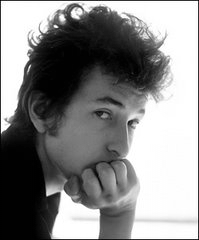 (5 stars out of five)
(5 stars out of five)This film had its world premiere at the 2006 Tribeca Film Festival. The story of that first showing goes like this:
United 93 was the first film to deal directly with the events of 9/11, and many people were understandably concerned with how the events would be portrayed. The film premiered at the Tribeca Film Festival in Manhattan on April 25, 2006. After the film ended, the audience sat in complete, stunned silence for the entirety (8+ minutes) of the credits, while many people also wept and sobbed openly during this time. After the last credit rolled and the screen was black, the entire auditorium erupted into thunderous applause.
This is a brave, selfless, and amazing film. I've never "called it" this early before, but this is - in my mind - already the Best Picture of the year. It will take something really, really good to top this one.
I've honestly never seen an audience become so emotionally affected while watching a film. A woman in front and to the left of me was visibly shaking during the end sequence. A man in the aisle across from me started gagging and almost vomiting during one of the more emotionally-disturbing sequences. The theater sat in stunned silence at the end. You could literally hear a pin drop. And the most amazing thing for me - as an avid movie-goer - was that, at the end of the film, everyone in the theater (which was quite packed for a weekday night) sat in their seats through the entire end credits. No one left. In all the years and all the hundreds of times I've sat in a theater, I've never seen that.
Like I said before, this is an incredibly brave film. The reason for this is not because of what writer/director Paul Greengrass (Bloody Sunday) decided to include in the film, but rather because of what he chose to leave out. Greengrass shows almost nothing of the people in the film before the fatal events. No backstory. No character traits. We are introduced to the characters as they board the plane. It's a bold move, and one that you'd think would distance you from the people, but it actually serves to make the story more universal, and more human. Just as an incident of movie violence is usually more affecting when it's not shown onscreen and you're left to imagine it for yourself, the passengers' emotional calls home during the final moments are much more powerful, as you never see or hear the people on the other side of the telephone line. Greengrass has made a decision to simply depict the events as they happened, nothing more, nothing less, and that simplicity translates into devastating emotional effect.
The movie has tried to be as technically accurate as possible, to a maddeningly wonderful degree. Greengrass shoots the entire movie with handheld cameras and minimal lighting, to create a "documentary" feel. The actors are unrecognizable, unknown actors, and even some real air traffic controllers and other people who were involved in the events of that day appear as themselves. Effort was made to cast actors that resembled their real-life counterparts as much as possible, and research was made to learn as much as possible about the personality and characteristics of each and every person involved. More research and interviews were conducted, in fact, to learn exactly what clothing every person wore on that day (or, if that was not possible, what kind of clothing that person usually wore) and the costumes are recreated here. The detail and care that went into this film really shines through.
It's a hard film to watch, but it's an important one. It's easily the first great film of 2006, and the best film of the year so far.


No comments:
Post a Comment